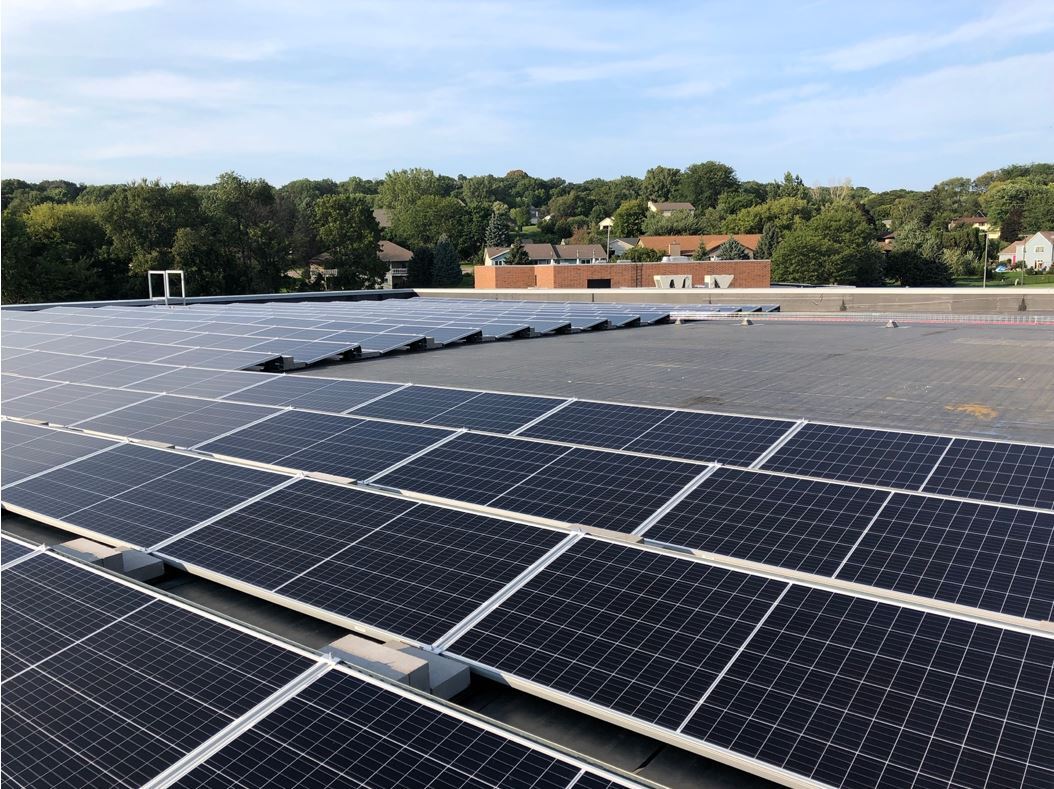Most states have programs that subsidize energy audits and efficiency measures in public facilities, so inquire whether your state has a specific program.
Energy monitoring at a school often results in an increased awareness of energy consumption, identification of wasteful practices, and opportunities for cost savings. The process typically begins by reviewing a minimum of 12 months of energy and water data to gain insight into usage patterns and trends.
With those data, it’s possible to spot irregularities that can inform decisions, implement targeted conservation measures, and ultimately reduce environmental impacts and operating expenses.
Installing technologies and practices to reduce energy consumption in schools encompasses a range of strategies aimed at improved efficiency and sustainability. Retrofitting outdated systems through retro-commissioning initiatives can boost existing infrastructure, ensuring that heating, ventilation, and air-conditioning (HVAC) systems operate at peak efficiency.
Additionally, investing in HVAC upgrades and installing energy-efficient equipment and advanced control systems can raise comfort levels while minimizing energy waste. For example, upgrading to LED lighting not only improves illumination quality, but also significantly reduces long-term energy usage and maintenance costs.
Installing solar photovoltaic panels reduces utility costs while generating clean, renewable power on-site. Schools that use these technologies and practices both lower their carbon footprint and set an example for students and the community, potentially establishing a culture of environmental sustainability for generations to come.
Financial, Educational, and Environmental Benefits
In addition to using energy-efficient technologies, schools should analyze the financial gains associated with these investments by comparing upfront costs with potential long-term savings, including impacts on utility bills and maintenance expenses.
Analyzing the environmental impact of reduced energy consumption highlights the sustainability initiatives in mitigating climate change and its positive impact on operating expenses. By working these topics into the curriculum, schools lead students toward understanding the significance of energy management and renewable energy practices in addressing energy conservation.
Incorporating sustainability and energy management into the curriculum encourages students to become proactive agents of change in their communities. Through hands-on projects and experimental learning opportunities, students gain practical knowledge about energy efficiency and environmental conservation, preparing them for future employment in the growing renewable energy field.
Ultimately, by emphasizing the interconnectedness of energy, environment, and society, schools prepare students for future careers in sustainable industries and instill values of responsibility and stewardship of the planet.
Examples to Follow
Wisconsin school districts like Northland Pines, Clintonville, and Baraboo demonstrate the power of energy management through various initiatives aimed at reducing energy consumption and promoting sustainability. Northland Pines School District, for instance, has implemented comprehensive energy efficiency measures, such as LED lighting upgrades, HVAC system improvements, and renewable energy installations like solar panels and a battery energy storage system, resulting in significant cost savings and reduced environmental impact.
In 2016, Northland Pines High School/Middle School consumed 1,509 megawatt-hours (MWh) (thousands of kilowatt-hours). By 2019, that number was reduced to 1,208 MWh; on-site solar installations accounted for 193 MWh of that savings. The use of solar and demand management resulted in an annual cost savings of $48,782.
Similarly, the Clintonville Public School District has prioritized energy management by investing in energy-efficient technologies, conducting regular energy audits, and incorporating sustainability education into the curriculum to encourage students and staff to make environmentally conscious decisions.
The School District of Baraboo has taken proactive steps to improve energy efficiency through initiatives like building automation systems, energy monitoring, and campaigns to encourage energy conservation practices among students and staff. Its most significant effort has been the installation of solar photovoltaic panels on the roofs of their high school and middle school, totaling 320 kW DC (kilowatts direct current).
These districts serve as models for effective energy management strategies, demonstrating the importance of collaboration between stakeholders, investment in innovative technologies, and a commitment to sustainability goals. Through their efforts, they not only reduce operational costs but also inspire their communities to become environmental stewards.
Available Financial and Performance Resources
In addition to analyzing the financial benefits of energy efficiency investments, schools can explore various grants, subsidies, and financial resources available to support such projects. Schools’ previous solar projects have often used third-party investors, unique programs offered by local utility providers, or grant programs.
Be certain to investigate all economic options for your area when considering your next project. In addition to local offerings, consider the following:
- Direct Pay, also known as elective pay, introduced in the Inflation Reduction Act
- State public service office programs
- Federal dollars from the Department of Energy and the Environmental Protection Agency
- Specific offerings provided through state or regional providers
Planning and budgeting for energy efficiency improvements involve assessing the school’s current energy consumption, identifying areas for improvement, and estimating costs for implementing energy-saving measures. Using technical tools like the Energy Star Portfolio Manager can provide insights into a school’s energy performance relative to similar facilities, allowing for benchmarking and goal setting. Additionally, schools can hire energy auditors and consultants to conduct comprehensive assessments and develop tailored efficiency plans aligned with budgetary constraints and sustainability goals.
By using these resources and tools effectively, schools can reduce operational costs and their environmental impact, enhance learning environments, and promote a culture of energy conservation within the school community. These provisions aim to accelerate the adoption of clean energy technologies and support the transition to a more sustainable and resilient infrastructure. Therefore, understanding and seizing the opportunities can be crucial for schools seeking funding for energy efficiency initiatives.
Take the Next Step
The most important first step is to measure and accurately track your energy usage and costs. You cannot determine where to go if you do not know where you are. Understanding the positive financial and environmental impact of taking energy management seriously is moving in the right direction.
Start with small, no-cost actions as you move toward reducing and managing your energy costs. Engaging students and the community in energy-saving initiatives gives your decisions exponentially more impact. Follow the example of these role model school districts and begin the journey of actively managing your energy usage.





